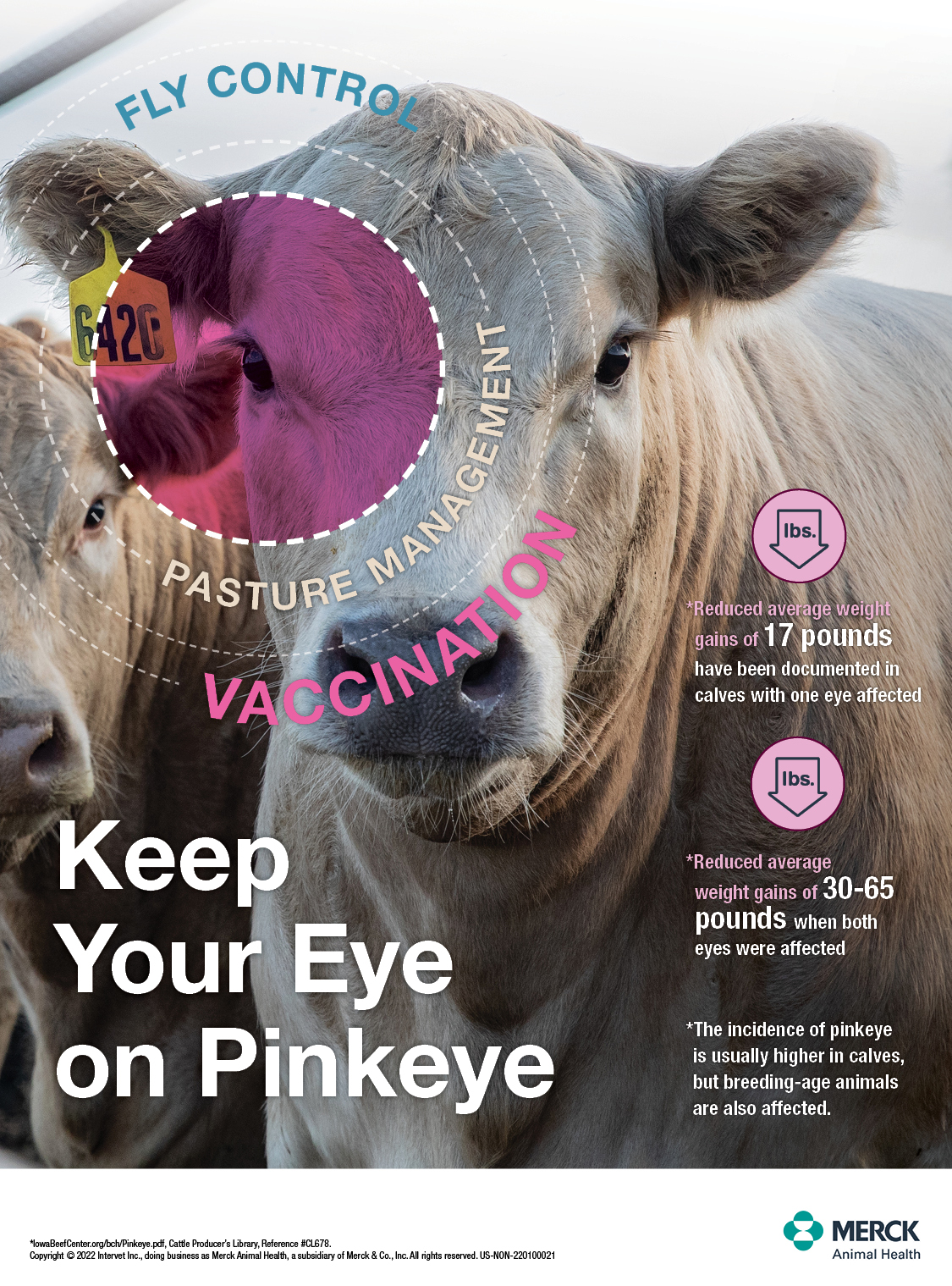An Ounce of Prevention is Worth Several Pounds of Cure

How preventing pinkeye in your herd can protect so much more.
Pinkeye affects more than 10 million calves in the United States annually, which results in substantial economic losses due to lost production, reduced weaning weights, and the time and expense that goes along with treatment. Market research has shown animals with pinkeye are commonly discounted $10-12 per hundred pounds of body weight when sold at auction.1 So, when you add it all up, costs from pinkeye can cost producers well over $100 a head. All of this, not to mention pinkeye is painful for the cattle, can add up to undeniable reasons to prevent the costly disease before it gets a chance to start.
According to a quantitative research study conducted by Farm Journal, over one-half of responding beef producers with a herd impacted by pinkeye reported losses due to a reduced sale weight, with culled animals costing them the most at an average of $337 per animal.2
Dairy operations also suffer economically from pinkeye outbreaks. “If you have a dairy heifer infected with pinkeye she won’t grow as well, so you'd have to feed her longer before she can have her first calf,” says Lowell Midla, VMD, MS, veterinary technical services manager with Merck Animal Health and a beef cattle producer. “Remember, it's only after having her first calf that a dairy cow starts to make money via lactation. So, if it takes longer to get her there, that's a cost.” The same Farm Journal quantitative study put milk losses due to pinkeye antibiotic treatment at an average of $352 per head.2
On the flip side, the Farm Journal study results showed that 94% of the responding dairy producers and 73% of the responding beef producers who vaccinated their animals reported a positive return on their vaccine investment. Those are significant percentages. Midla, who raises more than 80 registered Polled Herefords, has seen firsthand the benefits of vaccination. “For the last four years, we have used both Moraxella bovis and Moraxella bovoculi vaccines at home, and we have not had pinkeye.”
Remember, pinkeye losses can well exceed $100 per incidence. So, if you can prevent the disease effectively, you’ll most likely see it reflected in your bottom line. Work with your vet to determine your best course of action and know you are taking steps in the positive direction of pinkeye prevention.
For more information on managing pinkeye, visit https://www.drovers.com/news/education/managing-against-pinkeye-3-directions-gives-1-big-advantage
For more information on pinkeye vaccination, visit StopCattlePinkeye.com.
The economic effects of a herd pinkeye outbreak can be severe. Reduced average weight gains of 17 pounds have been documented in calves with one eye affected and 30 to 65 pounds when both eyes were infected. The incidence of pinkeye is usually higher in calves, but breeding-age animals are also affected.3
1 University of Tennessee Institute of Agriculture, 2007, Tennessee dairy cattle pest control profile, https://ipmdata.ipmcenters.org/documents/cropprofiles/TNdairycattle.pdf (Jan. 25, 2022).
2 Merck Animal Health Pinkeye Quantitative Survey, 2021, Farm Journal, Lenexa, KS.
3 IowaBeefCenter.org/bch/Pinkeye.pdf, Cattle Producer’s Library, Reference #CL678.







